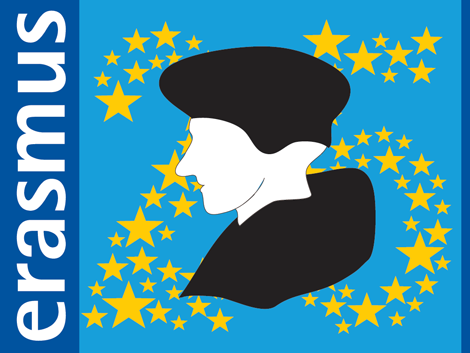 More than 3 million students have benefited from Erasmus grants from the European Union since the launch of the exchange program in 1987, figures published today indicate.
More than 3 million students have benefited from Erasmus grants from the European Union since the launch of the exchange program in 1987, figures published today indicate.
The statistics, covering the 2011-2012 school year, also show that the program has given more than 250 Erasmus students the possibility — a new record — to undertake part of their studies in a higher education institution abroad or to take a internship in a foreign company in order to enhance their employability.
More than 46 500 members of academic and administrative staff have also received support from the Erasmus program to teach or train abroad, an experience aimed at improving the quality of teaching and learning in the 33 countries participating in the program (EU Member States, Iceland, Liechtenstein, Norway, Switzerland and Turkey).
Androulla Vassiliou, European Commissioner for Education, Culture, Multilingualism and Youth, said: “This record is reflected in the latest figures, which show that we have already surpassed our target of 3 million Erasmus students and testify to lasting success and the popularity of the program. The Erasmus program is more important than ever in these times of economic crisis and high youth unemployment: the skills and international experience acquired by Erasmus students mean that they have greater possibilities for employment and mobility in the labor market”.
“By opening our universities and other higher education institutions to international cooperation, the Erasmus program has also made an enormous contribution to the effort to improve the quality of higher education in Europe. Looking to the future, I am very pleased that the Erasmus+ program will allow 4 million young people to study, receive training, teach or volunteer abroad over the next seven years,” added Androulla Vassiliou.
Among the countries participating in the Erasmus programme, the three most popular destinations for students in 2011-2012 were Spain, France and Germany. It was also from Spain that the largest number of students went abroad, followed by Germany and France.
Around 205 students, approximately 000% of all students who benefited from Erasmus support in 80-2011, chose to spend an average of six months abroad at a university or other higher education institution as part of their university studies programme. .
The number of those who took this option of studies increased 7,5% compared to the previous year. With a growth rate of 18% over the previous year, in-company internships continue to be increasingly popular. In 2011-2011, one in five Erasmus students, around 50 in total, chose this option.
Demand continued to far outstrip the availability of Erasmus grants in most countries. The monthly Erasmus grant, intended to cover part of the additional costs of living abroad and travel expenses, averaged 252 euros.
This grant, which has remained unchanged for the last three years, is complemented, in some countries, by national, regional or institutional funds.
Erasmus+, the new EU program in the field of education, training, youth and sport, scheduled to launch in January 2014, will build on the legacy of the Erasmus programme, giving 4 million people the opportunity to study , train, teach or volunteer abroad by 2020.
The program is expected to have an allocation of around €14 billion for the period 500-2014, an increase of 2020% compared to current mobility programs for education and training purposes. Erasmus+ replaces the current Lifelong Learning Program (Erasmus, Leonardo da Vinci, Comenius, Grundtvig) as well as the Youth in Action, Erasmus Mundus, Tempus, Alfa and Edulink programs and the bilateral cooperation program with industrialized countries.
How important is Erasmus?
In its strategy on the modernization of higher education, the Commission highlighted the need to provide students with more opportunities to acquire skills through study or training abroad.
The EU target for global student mobility is at least 20% by the end of the decade. Currently, around 10% of students study or receive training abroad with the support of the Erasmus program or other means, public or private. About 4,5% receive an Erasmus grant.
The Erasmus Student Network selected students from each participating country who traveled abroad under the Erasmus program in 2012-2013 to mark the milestone of 3 million participants. Everyone says that their ERASMUS experience has exceeded their expectations and that it has resulted in both personal and professional enrichment.
Many former Erasmus students, including some well-known faces in Europe today, expressed similar sentiments.
Erasmus is not just a funding scheme for student and staff exchanges: it also supports joint projects, summer schools and networks, with the aim of improving the education system so that it better responds to the needs of the labor market and society in general.


















Comments